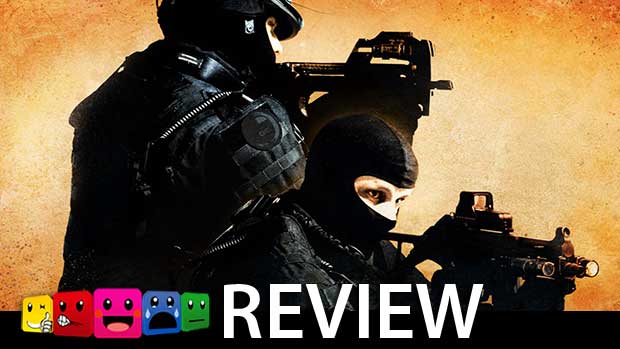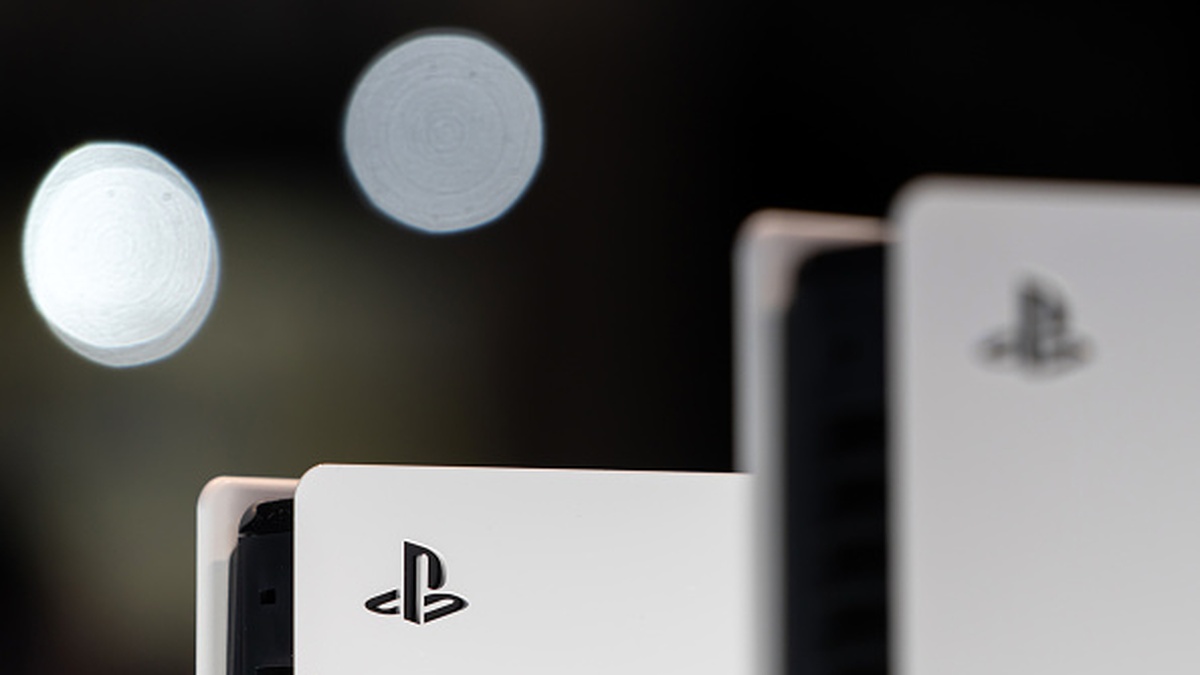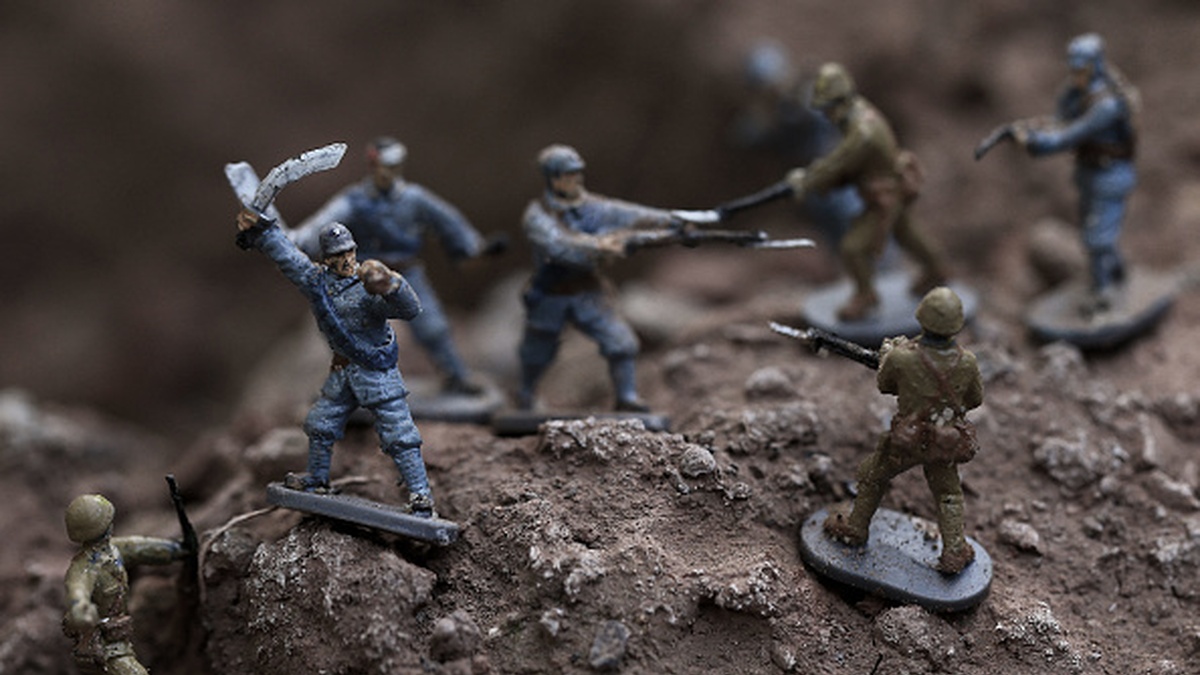You’d be hard-pressed to find another FPS, let alone a mod, that has experienced the type of endurance that’s fueled Counter-Strike for over a decade and cemented its place amongst gaming’s elite. What initially began as a simple Half-Life mod gradually resulted in the undisputed zenith of competitive FPS gaming due in part to its near flawless balance and unquestionable replay value despite having an overtly simplistic premise. Twelve years after Valve purchased the rights to the project, the Counter-Strike franchise remains a staple of the eSports circuit and statistically holds its own against the likes of other genre behemoths.
The decision to give CS a new installment can be equated to George Lucas signing off on three additional Star Wars films that would serve as prequels to the original beloved franchise. Unneeded and in most cases unwanted by traditional and longtime fans, Counter-Strike: Global Offensive was created with the intention of garnering a new, youthful fanbase through a slick and flashy presentation. Was the original outdated graphically? Sure. But it was always the substance behind the visuals that continuously stood the test of time.
While many established CS players did not take kindly to the news that Valve would be co-developing Counter-Strike: Global Offensive along with Hidden Path Entertainment, Hidden Path was not added to the mix without credentials. The developer has helped Valve to maintain and update Counter-Strike: Source since 2009 and has similarly contributed development work to Left 4 Dead 2, another prominent Valve IP. Regardless, CS gamers and FPS enthusiasts alike cautiously viewed CS:GO primarily with a single question in mind: Could Valve and Hidden Path replicate Counter-Strike’s tried and true formula while adding the necessary tweaks and innovations without sacrificing the quality and integrity of the original, venerated product?
In its practicality, the basis and context of Counter-Strike couldn’t be simpler. A group of Counter-Terrorists are pitted against a group of Terrorists and are given an objective, whether it be to rescue a band of hostages or prevent the Terrorist team from planting a bomb. Each round is won by whichever team completes their objective or eliminates the opposing force in its entirety. It’s the execution of these elements and mechanics rather, that have made CS as revered as it is today, and it has done so with only one stock “mode” available with the game. CS:GO however, adds three new modes in addition to conventional play.
Classic Competitive will be the one instantly familiar to fans, featuring 15 rounds on both T and CT side, while Classic Casual includes just 10 rounds, but turns Friendly Fire off and introduces an additional 50% kill reward amount. Arms Race on the other hand, shines in its official debut, though its concept won’t come as a surprise to longtime CS gamers as it is in actuality a simple renaming of the popular “Gun Game” mod.
Identical to Gun Game variants, Arms Race allots players a particular gun at the beginning of each match. Upon killing a member of the opposing side with that gun, you’re upgraded to a new weapon, and so on. There are a total of 26 weapons, or levels, that must be completed in order to win, the last of which being a knife kill. Each player and their respective level is shown at the top of the screen so that you’re always aware of the leader’s status and how close they are to the end. The mind-boggling omission of the grenade level, usually right before that of the knife, is an unfortunate misstep on the part of the developers as killing your buddies with a grenade right before knifing them wasn’t only a heap of fun, but it also added a degree of difficulty. Bringing a grenade to a gunfight is not as easy as it sounds, particularly when everyone knows you’re close to being named the victor of the match. Nevertheless, Arms Race is a game mode worthy of getting lost in on its own. Combining the high-intensity of competitive Counter-Strikewith the hilarity of knife kills, racing your friends to the final levels of each match in this mode will keep you entertained for months, if not years down the road.
Also newly introduced in Counter-Strike: Global Offensive is Demolition, a hybrid of sorts between Gun Game and Defusal, in which Terrorists are given a free pathway to plant the bomb and must defend it against the oncoming CTs. Better guns are then awarded upon winning each round. To complement the two new modes, 8 new maps have been added – two for Arms Race and six for Demolition. The most popular and traditional CS stock maps also make their return with little change aside from significant visual upgrades, with the most obvious alterations being that another “Tower” area has been added to de_train to counteract the original and is positioned directly across from it. De_nuke has also been modified slightly, as the “Lower” area bombsite now features just one set of doors as opposed to two. The change was most likely implemented to aide CTs in their task of defusing planted bombs. Previously, CTs would have to check behind and around both sets of doors before attempting to defuse, so in revoking a primary T hiding spot, the Lower bombsite now becomes more balanced.
So what about the actual game has Valve and Hidden Path modified? Quite a bit, as a matter of fact, and fortunately, the majority of their initiatives in Counter-Strike: Global Offensive amend and enhance the customary CS experience rather than hinder it. An introductory “Weapons Course” mode has been added to familiarize new players with the recoil of each weapon and the tricks that make each one easier to handle. You’ll go through a series of training tasks as a CT with the guidance of a supervisor directing you via intercom. As an added bonus, you can re-take the cumulative test at the end as many times as you please and try to best the time of everyone on your friend’s list.
In-game, a timer is now displayed when you’re a CT defusing the bomb, and having a defusal kit will cut that time directly in half. Assists have been appreciatively added and players are now assigned a calculated “Score” that is determined not just by your K/D ratio, but by your overall contributions to your team. A new pro-sports-inspired scoreboard has been added to the top of the screen (each team’s score is shown on either side of the remaining time in the round) which also displays the status of your teammates, so the annoyance of having to press Tab every so often in order to see the score and condition of your team is now history. Tabbing will not go unused in CS:GO however, as doing so will show you the amount of money each teammate currently has. This will undoubtedly be a welcome addition to the competitive circuit as players previously had to open up the game’s console and type in a command to get such information.
The newly installed voting system is equally terrific. Players can call a vote at any time for a new map or to kick a particular player. For public servers and players who spend the majority of their time playing on them, this feature will simply be invaluable, especially if hacking becomes as prominent as it currently is in CS:S. Previously, if a player with an aimbot or speed hacks showed up, it would require the presence of a server admin in order to boot him. Now, it only requires the press of a button and a few votes. A new buy menu has also been integrated, featuring a category wheel that you can quickly navigate via your numerical keys. Clearly displaying the power, rate of fire, and accuracy underneath each weapon, there’s a lot to like about the new interface and chances are you won’t miss the old, archaic menu one bit.
Counter-Strike: Global Offensive is not without its missteps, however, and a few of them are so glaringly ill-advised that they may have the potential in and of themselves to deter people from spending time away from previous CS installments. Firstly, an in-game musical score can now be heard throughout each round, playing as you spawn and after you’ve been killed. It even plays when the bomb is planted and gradually gets more dramatic as it’s about to explode. It’s not a catchy tune to begin with, so every rendition of what essentially amounts to ominous tones only becomes more exasperating by the round. The decision to add musical sequences to in-game play was completely unwarranted and might even break the suspension of disbelief for some players unable to get past the sense that they’re Jack Bauer in an episode of 24. It’s overly dramatic, to say the least.
Similarly, the decision to add a 5v5 matchmaking system would otherwise be lauded if it weren’t for its poor design. Competitive players have previously had to turn to 3rd parties such as IRC Chat or ESEA in order to find and organize matches, so in-game tools that would allow players to be placed directly into such match settings were quite obviously heavily anticipated. Yet the problem is that the matchmaking system most commonly drops you into a game in-progress and with the standard $800 starting budget. Needless to say, such a nuisance is frustrating not only for the player dropped into an ongoing game, but for his/her teammates that now have to proceed with a player that has started out with an inherent disadvantage financially. The system would be much better equipped with one similar to that of DotA (curious as to why Valve chose to implement it with one product successfully but overlooked it with their most recent title), because as it sits now, it simply feels like a 5v5 pub match – most players demonstrating little communication and playing for themselves.
The gaffes of the in-game music and poor matchmaking are miniscule in comparison with some of the developer’s decisions in regard to weapon selection and cost. CS:GO features a number of new weapon and equipment additions, modifying every gun category from pistols to rifles. For example, Dual Pistols have been made available to CTs, the Nova shotgun replaces the Leone 12, and the Scout and Krieg 552 have been replaced by two new sniper rifles. Additionally, the PP-Bizon with its 56-round clip and quick fire rate is surprisingly effective and adaptable to both long and close-range situations. These particular amendments are forgivable and perhaps even understandable, but the most drastic and unjustifiable changes evident in CS:GO come in the form of three guns added as replacements to integral weapons and staples of the series:
Weapons Changes
P2000 replaces USP
Though it contains one extra bullet in its clip, the P2000 doesn’t boast the same blazing fire rate that made the USP such an ideal weapon for the pistol round.
MP7 replaces MP5
No other SMG in CS has featured more prominently on the competitive circuit than the MP5. Upon winning the pistol round, most players would opt for the MP5 which had considerable prowess as a rushing weapon. The MP7 of CS:GO may gave similar power, but the accuracy is completely lost, not to mention that it costs $200 more than its more effective predecessor.
M4A4 replaces M4A1
In my mind, the single largest mistake CS:GO boasts, and an absolutely mind-boggling blunder. A warranted criticism of the CS series is that only a select few of the game’s guns can be used as viable weapons. Particularly on the competitive level, Counter-Strike has always operated mainly through the use of just three weapons: The AWP, AK-47 (to be used on T side), and M4A1 (to be used on CT side). This three-weapon system, though tiring, has created a faultless balance and is a factor in the longevity of the series’ previous installments. The M4A4 handles essentially like the M4A1 without the silencer, mainly because the M4A4 doesn’t have the ability to attach one. Thus, it immediately becomes a less versatile weapon than its predecessor as it’s without the option to significantly cut down recoil.
By omitting the USP, MP5, and M4A1, Valve and Hidden Path have effectively altered what is generally perceived as the natural weapon progression of a CT during competitive play. It’s simply too much of a transition to ask of players, and those longtime fans who find themselves unable to convert to a weapon progression of the P2000, MP7, and M4A4 will look for solace in Source and 1.6.
Thankfully, the equipment additions and revisions are less severe. In CS:GO, players are now allowed just one Flashbang as opposed to two, so you’ll have to take caution in making each one as effective as possible. I still believe Molotov Cocktails (T) and Incendiary Grenades (CT) are imprudent implementations for a game that puts so much emphasis on timed execution of team rushes, but at a pricey $850, players fortunately won’t be looking to spam them anytime soon. The Decoy Grenade ($200) on the other hand, which upon explosion emulates gun sounds and even comes up on the enemy’s radar, should prove to be a nice addition to a player’s arsenal particularly in situations where the opposing team’s numbers outweigh your own.
It’s worth noting that the costs of certain essential weapons and equipment have bizarrely been altered. Such a vital component as the defusal kit for example, has been raised $200 in price and now costs $400. The AK has also been raised $200 and now stands at $2700. Furthermore, the adored Deagle and AWPer’s best friend has been upped from $650 to $800. Money in Counter-Strike is as important a concept and facet as any in the entire game, and understanding how much your team as well as your opponents will be getting each round can influence the decisions that you make in different situations. By screwing with the delicate nature of the CS money structure, the devs have also changed the very strategic element of the game in the sense that players in certain rounds will now gratuitously have to choose between buying guns or nades.
Without question, CS:GO boasts significant visual upgrades over previous series installments. Textures and character models are rendered in sharp detail, and certain map areas are displayed with quality HDR lighting. It would have been nice to get a CT defusal animation to replace the traditional progress bar, but the upgrades are notable nonetheless. Similarly, CS:GO significantly improves the mechanics of the Counter-Strike experience. While I feel as though the controls don’t feel as fluid as they do in Source, they certainly don’t feel bulky by any means. In addition to hitboxes being considerably updated, each gun now has a different recoil pattern and distinctive handling, so spraying toward the feet of your enemies and hoping for a headshot will no longer work. The enhanced mechanics and adjusted controls feel very much like a cross-platform game, and it’ll be instantly apparent to longtime fans that Valve/Hidden Path undoubtedly had the Xbox 360 and PS3 in mind when developing the game.
No modern FPS today ships without some form of the “rank” concept, as it’s quickly become the ultimate incentive to the re-play value of any FPS and a major factor in its longevity and ultimate durability amidst a crowded market. Counter-Strike: Global Offensive is no different in this regard. CS:GO does feature a ranking system (your personal rank can be found in the upper left of your stats page), though the computation and implementation of it seem muddled. It’s been said that the structure of it is based upon the Elo rating system which, in succinct terms, calculates the relative skill of players. So in theory, you’ll move up faster in rank by killing players rated higher than you than if you were to kill players ranked lower than you. In traditional Elo systems however, each player is assigned a numerical rating. Yet in the case of CS:GO, players are assigned military rank icons which are not deciphered or explained. Aside from what I stumbled across on csgoforum, there’s currently little information available regarding how many ranks there are and what each one signifies, so Valve may want to elaborate on the Elo system in its entirety as soon as possible.
An expansive Achievement list has also been added to keep you and your friends busy for months down the line. Five categories that include Team Tactics, Combat Skills, Weapons Specialist, Global Expertise (Maps), and Arms Race and Demolition, each have their own unique Achievement set. Depending on how many you’ve completed in that respective category, a Bronze, Silver, or Gold Medal will be displayed next to the category which adds a whole new layer of bragging rights and incentive to continue playing.
In the end, any review score for Counter-Strike: Global Offensive is going to be completely relative to the context of the reader and their experience with previous CS installments. For newcomers, CS:GO presents a dazzling FPS experience with two modes in Classic Competitive and Arms Race that offer fast-paced and engaging shooter action. For old-timers on the other hand, the lurid presentation may not be enough to overlook the glaring and undeniably puzzling additions and tweaks that might ultimately make you permanently nostalgic for the likes of Source and 1.6. CS:GO perhaps says more about the legacy of its predecessors than it does about its own merits. Mainly, it is because of its inequities in comparison to the previous installments, along with some noticeably missed opportunities, that prevent CS:GO from being truly phenomenal.
To the credit of Valve and Hidden Path, it would seem as if the developers have against all odds found a way to innovate the 12-year old franchise without sacrificing the quality and integrity that the previous installments were built upon. While it’s tough to envision CS:GO overtaking Source and 1.6 as the competitive circuit’s CS installment of choice, especially taking into account its misguided lapses, CS:GO has working for it the same triumphant formula that has helped to stabilize its predecessors in relevant territory for years – the ever emphasized components of “teamwork” and strategy that Counter-Strike demonstrates better than any other FPS in existence, perhaps more so than any game across all genres.
Whether you’re looking to tide yourself over until the Fall’s big releases or are looking for that one engrossing title suited to engage you well into next year and beyond, CS:GO offers you a multiplayer experience that most $60 releases don’t even remotely come close to at a price point of $15. Meet the newest Valve product you’ll find yourself helplessly dumping hours into.











Published: Aug 22, 2012 07:02 am